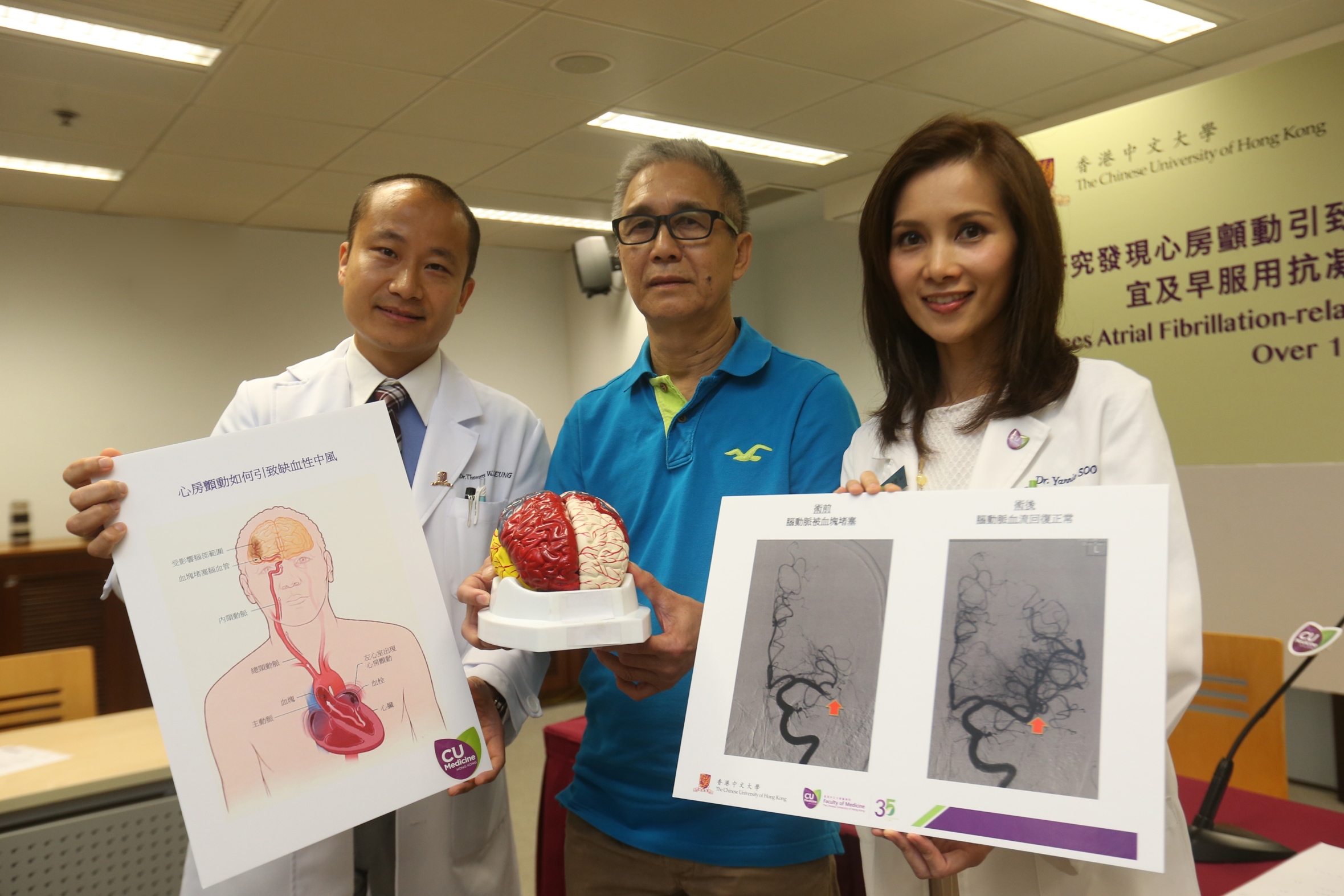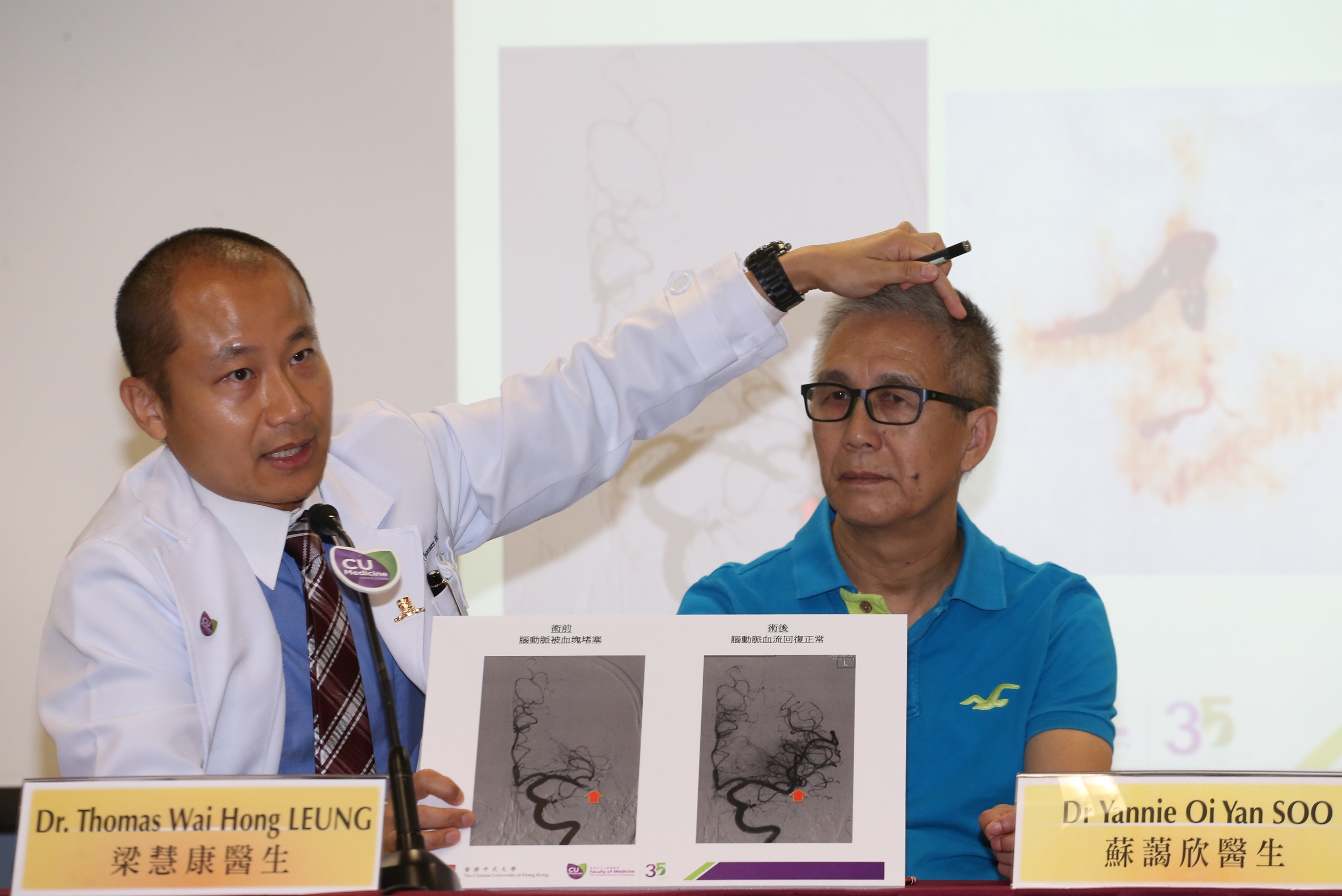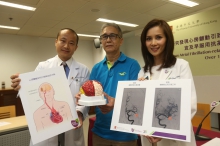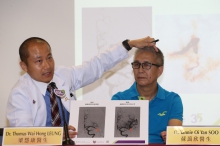CUHK
News Centre
CUHK Sees Atrial Fibrillation-related Stroke Cases 3 Times Higher Over 15 Years
A research conducted by The Chinese University of Hong Kong (CUHK) shows that the number of Atrial Fibrillation (AF)-related stroke cases has seen 3 times higher over 15 years. As AF-related stroke is highly preventable with oral anticoagulation, the researchers suggest optimizing the use of the new anticoagulant to reduce the chance of stroke in AF patients.
AF could lead to formation of blood clots and result in stroke
AF is the most common type of arrhythmia. Currently, approximately 33 million people worldwide are suffering from AF. While in China, the prevalence of AF has increased 20-fold over an 11-year period, in Hong Kong around 70,000 individuals are also being affected by AF.
Irregular heartbeats in AF affect blood circulation in the heart and thus lead to the formation of blood clots. If these clots enter the bloodstream and lodge in arteries in the brain, they will cause an ischaemic stroke. The risk of stroke is 5 times higher in people with AF than those without, while AF-related stroke is more severe than other types of stroke and its mortality rate is also higher.
Risk of AF-related stroke increased with age and growth was most pronounced in the 65 – 72 age group
To evaluate the trend of AF-related stroke and the use of anticoagulant among patients, the neurology team from the Faculty of Medicine at CUHK conducted a retrospective study. The team reviewed the data of around 4,000 patients admitted to the Prince of Wales Hospital for ischaemic stroke and transient ischaemic attack in year 1999, 2004, 2009 and 2014. Results show that cases of AF-related stroke have increased more than 3 times over the 15-year period, from 84 cases in 1999 to 321 cases in 2014. Of other patients, most had a stroke due to atherosclerosis and the number did not increase significantly over the 15-year period.
Although the majority of AF-related stroke patients over the 15-year period were cases aged 80 years old or above, the most substantial growth was observed in those aged between 65 and 72 years old.
|
|
1999 |
2014 |
|
Cases of AF-related stroke (persons) |
84 |
321 |
|
Stratify the cases by age: |
||
|
10 |
29 |
|
11 |
52 |
|
25 |
69 |
|
38 |
171 |
A member of the research team, Dr. Thomas Wai Hong LEUNG, Lee Quo Wei Associate Professor of Neurology, Department of Medicine and Therapeutics, Faculty of Medicine at CUHK, remarked, ‘AF is the most common cause of stroke among the elderly, accounting for half of stroke patients over 80 years old. As a result of the aging population, we believe that the number of AF-related stroke patients will continue to rise and it is necessary to find a way to prevent AF-related stroke early.’
Bleeding and stroke risks could both be reduced by using a new anticoagulant
AF-related stroke is highly preventable with oral anticoagulation. However, 70% of AF-related stroke occurred in non-anticoagulated patients in the 15-year study. The low utility of anticoagulants may be due to the high bleeding risk of the traditional anticoagulant, Warfarin. For example, physicians are reluctant to initiate anticoagulation in ischaemic heart disease patients as they have been using aspirin, an antiplatelet agent which could also lead to bleeding. In recent years, the introduction of ‘Non-vitamin K antagonist oral anticoagulants (NOAC)’ has reduced the bleeding risk and broadened the use of anticoagulants to elderly patients and those who are suffering from ischaemic heart disease.
Dr. Yannie Oi Yan SOO, Clinical Professional Consultant, Division of Neurology, Department of Medicine and Therapeutics, Faculty of Medicine at CUHK, also a member of the research team, stated, ‘Among different causes of stroke, AF-related stroke is the most preventable by anticoagulants. The medical profession has accumulated considerable experience in and data for the new anticoagulant NOAC over the past few years. Researches show that for Asians, the elderly and patients with ischaemic heart disease, NOAC can effectively reduce the risk of stroke with lower bleeding risk. We hope this study will raise the awareness of the public and local physicians about AF-related stroke, so that appropriate medication can be given to more AF patients and reduce their risk of stroke.’
Dr. SOO added, ‘Patients with mitral stenosis, with a metallic heart valve implanted, or with moderate to severe renal failure or liver failure, are not suitable for NOAC. Therefore, patients should consult their doctors first in order to determine the most appropriate treatment.’
The current study also found that hypertension and ischaemic heart disease are both risk factors for AF and stroke. The research team issues a reminder that the prevention of AF and stroke must begin in daily life. Once an individual develops risk factors for AF or stroke (such as hypertension, diabetes and hyperlipidemia, etc.), medication can only lower the chance of stroke but not reduce the risk to zero. To prevent cardiovascular and cerebrovascular diseases, the research team recommends a daily intake of at least 5 servings of fruits and vegetables, reducing the consumption of red meat and food with trans-fat, and doing aerobic exercise every week.
A research conducted by the neurology team from CUHK Faculty of Medicine shows that the number of Atrial Fibrillation-related stroke cases has seen 3 times higher over 15 years. (From left) Dr. Thomas LEUNG, Lee Quo Wei Associate Professor of Neurology, Department of Medicine and Therapeutics, CUHK; stroke patient Mr. LOK; and Dr. Yannie SOO, Clinical Professional Consultant, Division of Neurology, Department of Medicine and Therapeutics, CUHK.
Dr Thomas LEUNG (left) explains that Mr LOK’s left cerebral artery was occluded by a blood clot several months ago when he had a stroke. His blood flow to left cerebral artery is back to normal after the blood clot was retrieved.







